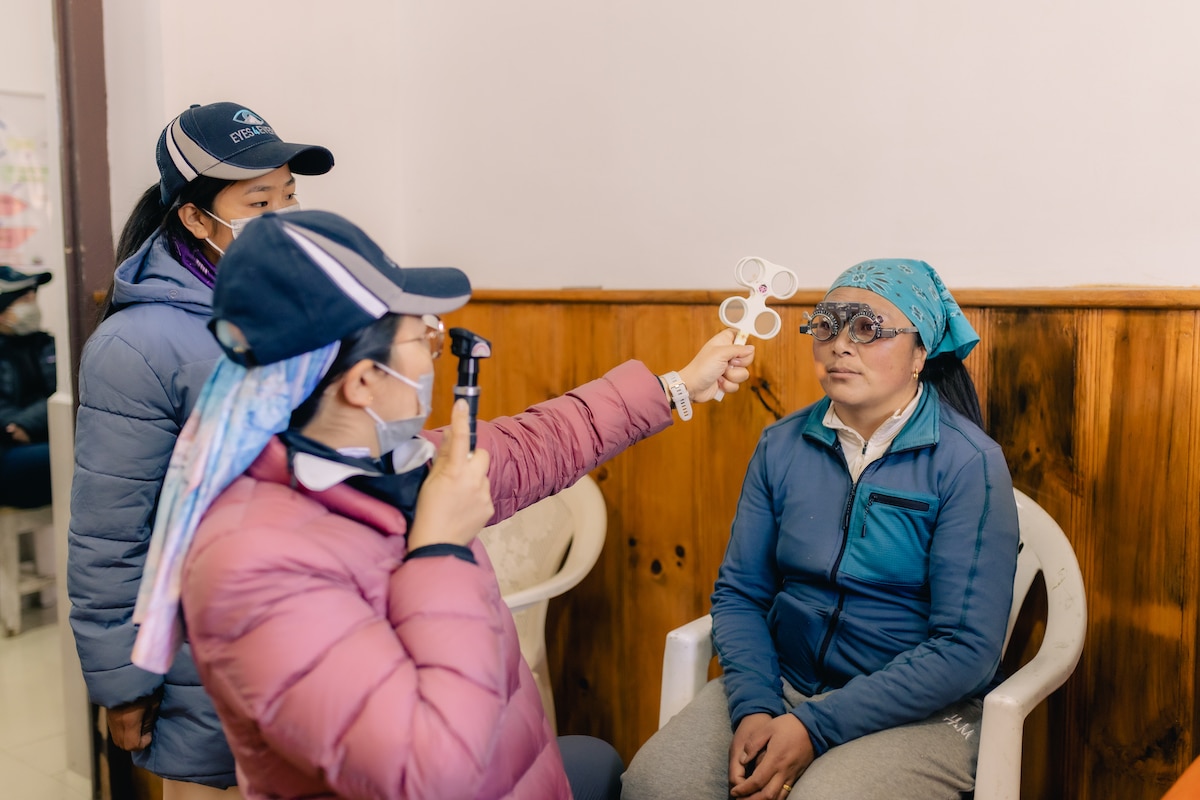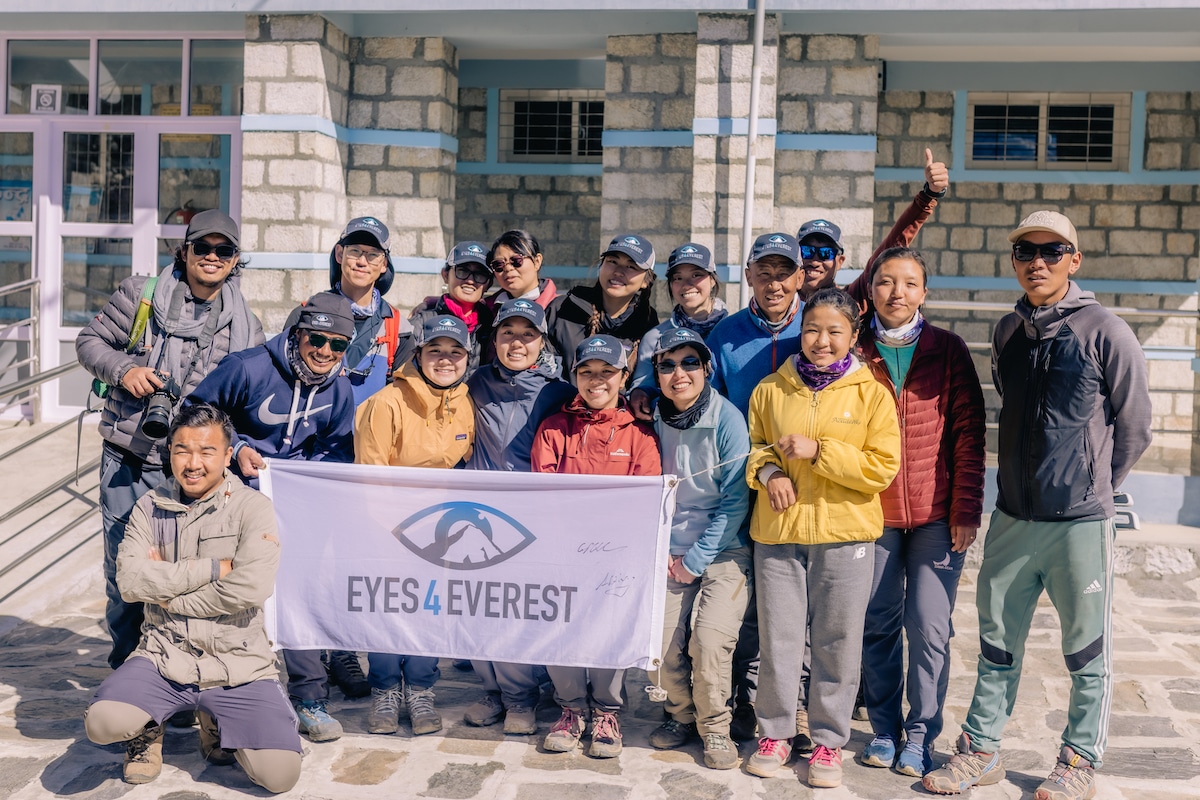Australian optometrist SHAUN CHANG wanted to ensure the view from the top of world could be
enjoyed by all. So, he established Eyes4Everest to deliver much needed eyecare services to the
people of Everest National Park each year.
When Sydney optometrist Mr Shaun Chang stumbled across a bag of broken frames, and a trial lens kit with mismatched lenses dating back to the 1960s, he was shocked to find this was the extent of the Everest National Park communities’ optometry services, in the Himalayas of eastern Nepal.
From this, he established volunteer organisation Eyes4Everest. The organisation has serviced the primary eyecare needs of local communities annually since 2014 and is set to return to Everest and Langtang on 20 October 2024. Momentum behind the project for the past decade has also culminated in a permanent eye clinic to offer a more sustainable service.
A frequent trekker of Mt Everest, Chang was forced to turn back during a climb in February 2013, with heavy snowfall and poor weather conditions threatening him with frostbite.

During his downtime, he visited the local hospital in Khunde built by Sir Edmund Hillary – a New Zealander and the first person recorded to have reached Everest’s summit – where he was given a tour of the facilities by local staff.
“When they showed me the eyecare facilities they had at the hospital, I thought: ‘That just won’t do’,” Chang says.
In the eye clinic, he came across three bags of donated spectacles and a trial lens set with lenses out of order. Although he spent an afternoon teaching hospital staff how to organise them with a vertometer, he knew more had to be done to meet the basic needs of the community.
Up until that point, the extent of eyecare in the region involved patients sifting through bags of donated spectacles and choosing one that best suited their vision needs.
When establishing eyecare services for the Everest communities, Chang’s intention was to go through the regular avenues of philanthropy and partner with large, well-established organisations. However, the organisations would only service regions with a greater population, and thus more of an eyecare need.
“My friend told me, if anything was going to happen, it was up to me to get it going,” he says.
The charity had some support from sponsors such as Melbourne-based lens manufacturer CR Labs and Australian-owned optical lens and equipment supplier Opticare, which was enough to kickstart operations.
Later, Eyes4Everest would partner with charitable organisation, the Himalayan Trust Nepal which was first established by Sir Hillary in the 1960s. It provides Nepalese communities with access to safe water, healthcare and education.

During the initial trip – Chang and a small team of two optometrists spent three days at the hospital. The first day was dedicated to teaching staff about the mission. The next two days they spent screening patients – 152 in total with 32 pairs of spectacles prescribed.
Although an impressive number, Chang recalls the patients that did not make the cut.
“We were exhausted, but there were still people waiting outside that we had to turn back,” he says.
“The patients – including kids – had walked three or four hours from other villages. Which meant they had to walk home in the dark when we couldn’t service them. It was very tragic, and heartbreaking for us. So, we decided that during the next trip, we’re going to travel to those villages rather than have them come to us.”
Chang realised that this too would be beneficial for those who were so visually impaired they could not leave their villages to trek to the hospital.
Eyecare heroes
Integral to the operations in Everest National Park is Nepalese optometrist Mr Rickchen Sherpa.
Sherpa – who has recently relocated to Sydney from Nepal and is now working at Eyecare Plus Chullora – discovered Eyes4Everest through a Facebook ad in 2019 when the organisation advertised the need for a locally-based optometrist.
And when COVID meant the Australian contingent couldn’t travel to Nepal, Sherpa and a team of local team of optometrists ran the operations.
For the volunteers, it is fulfilling to see the impact of their efforts on the local communities. Sherpa himself relishes the role and what he can do for his people.

He describes a case with a patient who had cataract surgery many years before and was wearing +11.00 D lenses. However, the nose bridge of his frames was broken, with one half of the frame holding the lens in place and the other held in place by a rope.
“I was really emotional seeing someone in that condition, and was so happy to see the impact that providing him with new glasses had,” Sherpa says.
In totality, trips normally take three weeks. They are slow, as volunteers must acclimatise to the high altitude.
The team conducts comprehensive eye exams, with the camp separated into stations. First, patient history and visual acuity testing is conducted, followed by binocular vision testing, and then by refraction and ocular health where the team determines whether ophthalmology intervention is required. In the final station, glasses are dispensed.

Chang stresses prescription glasses are made to order with the information for prescriptions sent to dispensaries in Kathmandu. Frames are fit in the clinic, with patients given the choice of single vision, bifocal, and multifocal lenses, among others.
He also ensures there’s a good choice of frames for patients, no matter how remote they are.
“I don’t like the idea of a bag of donated glasses with patients having to find one that works. It’s a lot of weight to carry and you’re not giving that person what they want style-wise and what they need vision-wise,” he says.
A unique problem to Himalayan communities and isolated villages in this region is the increasing prevalence of myopia. Chang noted that these communities are using their smartphones more frequently and so there has been myopic progression – which was virtually unheard of in the region in previous eras.
In response to this need for primary eyecare – and looking for a more permanent solution – Chang and Sherpa have set up a permanent eye clinic in Khunde – an addition to Khunde Hospital – which is the main hub for several villages in the region.
In collaboration with the Himalayan Trust Nepal, Eyes4Everest established the permanent base to service the primary eyecare needs of the area.
It joins a general ward, laboratory and dental clinic and officially opened on 17 November 2023 – 10 years after Chang’s first visit to the hospital.
“We successfully built a clinic that provides primary level of eyecare with an ophthalmic assistant servicing the villages,” Sherpa says.
To enquire, donate or get involved, visit eyes4everest.org.au.
More reading
Cambodia Vision: Clarity for the country
Shaun Tatipata: A visionary for community health and leadership
Helping the world see more and be more




